Traveling To Costa Rica – FAQs
You are bound to have questions about your trip and , one of the most in the world! No need to worry. We’re here to help! We answer your frequently asked questions, give you the best and even offer a Costa Rica ! Keep reading to make your next a breeze and an you’ll never forget.
About Costa Rica
 Where is Costa Rica?
Where is Costa Rica?
Costa Rica is a small Central American country bordered to the north by Nicaragua and to the south by Panama. To the east, you’ll find the Atlantic or Caribbean Coast, and to the west, you’ll find the Pacific Ocean. This small peaceful country is approximately 9 degrees north of the equator. Due to its geographical position, it serves as part of the Central American isthmus between the North and South American continents and the bridge between the northern and southern hemispheres. This allowed wildlife species to migrate between the two which is one of the factors that contributed to the incredible, biologically diverse that is found here.
What is the geography of Costa Rica?
The highland range from 1,000 to 2,000 meters, or 3,000 to 6,000 feet, above sea level. Costa Rica has mountain several ranges: Cordillera de , Cordillera Central, and Cordillera de Talamanca. The active gracing the lands are the , Arenal, Irazu, Rincon de la Vieja and Turrialba volcanoes that also produce much visited . The ‘s highest mountain is Cerro Chirripo, reaching a height of 3,819m (12,530 ft.). The is flanked by large coastlines on both the Atlantic and Pacific sides and also has various rivers and waterfalls that attract the adrenaline junkies. Costa Rica’s land mass is 51,100 square kilometers, making it about half the size of Kentucky or two-thirds the size of Scotland. The geography of Costa Rica makes it an ideal destination. Between majestic mountain ranges, beautiful and a different or everywhere you look, it’s easy to have the trip of a lifetime!
 What is the weather like when traveling to Costa Rica?
What is the weather like when traveling to Costa Rica?
Costa Rica’s weather is temperate all year, so any time is a great time to ! The coastal breezes cool down the warmer beach areas. Temperatures in the mountains are pleasantly warm during the day and get cooler at night, making each-each morning refreshing and bright. The average temperatures range from 89degF at the highest on the coasts, down to 62degF at the lowest at highest elevations. The has two seasons, the and the . The – called the green season by locals – is from May to December. But even during the , it is sunny and warm most of the day. The rain comes in short dramatic bursts, usually in the afternoon. Because of the various eco-zones across Costa Rica, the dry and seasons vary. For example, in (, Playa Hermosa) and the (Santa Teresa), the is from December to April, but on the (, ), the is September-October.
Is the sun really intense in Costa Rica?
Being in a tropical climate, it can be easy to get sunburned or dehydrated. Don’t let that ruin your ! Make sure you use plenty of sunscreen (remember, we’re just 9 degrees above the equator!) and drink plenty of liquids so you stay healthy during your .
What time is it in Costa Rica?
Costa Rica is 6 hours behind Greenwich Mean Time, which is equivalent to Central Standard Time (CST) in North America for half of the year. Costa Rica does not change clocks for daylight savings time, so from April through December local time is one hour ahead of CST, or Mountain Time.
 Is the government stable?
Is the government stable?
It may not be news to you that Costa Rica has often been described as a peaceful country. Quite literally so because they haven’t had a standing army since the 40s! The local government is the most stable compared to the rest of Central America!
When is the high and low season?
Many people ask about the general time periods of the high and low season, which typically corresponds to the dry/green season months. The usually begins in late November and continues through mid-April. The here starts in May and grows heavy in August, September, and October. August and September can be pretty rainy. But you should also note that the green season brings with it the most lush and beautiful nature!
 What are regular business hours?
What are regular business hours?
In Costa Rica, “regular business hours” depends on the business. For government offices, the hours are relatively short. Usually, 8 am to 4 pm, Monday through Friday. For banks, it is a bit arbitrary, and depends on the particular bank and branch; they open any time between 9 and 11 am and close anytime between 3:00 and 7:00 pm. Shops in smaller towns are usually open from 9:00 am to 6:00 pm, but some will open earlier at 8:00 am, and some will close later at 7:00 pm. Most groceries stores open at 7 am and close at 8:00 or 9:00 pm. Convenience stores and liquor stores are open later till 9:30 or 10 pm. Some offices and stores will close for lunch, either between 12:00-1:00 or 1- 2:00. are famous for running on “tico time”, but businesses don’t typically follow that stereotype. Although it is common for smaller businesses to close for an hour at lunch time.
Getting Ready for your Trip
Costa Rica Visa / Entry Requirements?
A passport is required for entry in Costa Rica. For US and Canadian citizens, only a valid passport is necessary. No prior Visa approval is required. For non-US citizens, a Visa is sometimes required depending on where your citizenship is based. It is always a good idea to find out the current visa and entry requirements from your local Costa Rican Consulate. Once you enter Costa Rica, most visitors are given a 90-day tourist visa that is stamped in their passport. Make sure your passport is valid for the entire length of your stay. Some foreign nationals of certain countries may be given a shorter visa, 30 or 60 days. Be sure not to overstay your welcome!
What should I pack?
We provided a list on what to pack on our packing for Costa Rica Page. The main thing to consider in advance is where you will travel to and what you will do. Costa Rica has a lot of ecosystems and even going to one location can require several different outfits! Monteverde, for example, is a cloud forest. So you can expect some level of warmth and humidity as well as chilly weather and rain! Make sure to also check our list for other types of items!
Money & Budget
Where can I exchange money?
Exchange US Dollars – Exchanging money is possible at the higher end hotels and also at banks. Banks are likely to offer you the better deal. Yuu can also simply get colones from the many ATMs you can find around the country, but make sure you are aware of the exchange rate. US dollars are accepted in the most touristy areas but make sure to bring colones when going off the beaten path.
Credit Cards – Credit cards are widely accepted by most businesses in Costa Rica. Most vendors give discounts for using cash, as a credit card merchant companies charge high percentages on transactions here.
How much money do I need?
How much money you spend depends entirely on what you plan to do, what you want to see, what you want to buy, where you want to go and how you want to get there. To give you an idea of what to expect, here are some average price: a typical lunch or dinner costs around $6-8 at an affordable local restaurant (or “soda” as they called in Costa Rica) or up to $20-40 or more at a formal restaurant. Beer or basic mixed drinks come at about $2-3 at a typical bar or restaurant, and double or more at a luxury hotel or posh restaurant.
Taxi rates are cheap compared to tickets in U.S. cities. A trip within a town like San Jose that is only 2 or 3 kilometers will cost between $2 and $6, depending on local traffic (which can be significant in downtown San Jose). Other services like Uber are also available, and the fares are usually lower and they are also considered to be safer than taxis. When taking a taxi, always get the official red taxi with yellow triangle!
Tipping in Costa Rica – is it necessary?
Tipping in Costa Rica is not a common practice since restaurant bills include the 10% service tax and other service providers like taxi drivers and guides also don’t expect tips. If you ‘want’ to tip is entirely up to you. It is always appreciated when you offer a waiter or guide a tip when you enjoyed their services and want to offer them a little something extra!
Health & Safety
Are there dangerous currents for swimmers?
 From swimming to to watching to on the sand, the in Costa Rica are a great place for activities. However there are several beaches that claim the lives of many swimmers every year. Costa Rica’s beaches do not usually have lifeguards, so you need to be very aware of rip tides and undertows. Most of these accidental deaths are caused when swimmers panic. Many rip tides will pull you out but not under. To escape a rip tide, swim parallel to shore until you find a place where the current subsidies, then swim to shore. Do NOT fight the current directly.
From swimming to to watching to on the sand, the in Costa Rica are a great place for activities. However there are several beaches that claim the lives of many swimmers every year. Costa Rica’s beaches do not usually have lifeguards, so you need to be very aware of rip tides and undertows. Most of these accidental deaths are caused when swimmers panic. Many rip tides will pull you out but not under. To escape a rip tide, swim parallel to shore until you find a place where the current subsidies, then swim to shore. Do NOT fight the current directly.
Can I drink the water?
The local authorities state that the drinking water when traveling to Costa Rica is perfectly safe, but we recommend that you stick to the bottled variety wherever possible. Water in certain areas may disagree with your system, so we suggest you play it safe and be cautious of what you consume.
Is it safe to eat the local produce?
 The fruits and vegetables in Costa Rica are safe to eat. However, if you are susceptible to upset stomachs when traveling abroad make sure that you only eat peeled fruit and well-cooked foods.
The fruits and vegetables in Costa Rica are safe to eat. However, if you are susceptible to upset stomachs when traveling abroad make sure that you only eat peeled fruit and well-cooked foods.
What about mosquitoes?
There are surprisingly few mosquitoes in Costa Rica on popular tourist beaches. There are more in the rainforest and along the rivers. If you intend to take a river rafting tour or hike the jungle, bring insect repellent, but make sure it does not contain citronella or other harmful pesticides that could hurt the local wildlife.
Is Costa Rica dangerous for tourists?
Despite the perception of Latin American countries being dangerous, Costa Rica remains a very safe, stable country. The most common crimes against tourists are pickpocketing and breaking into rental cars. You can certainly avoid being the victim of such crimes by not putting yourself in high-risk situations.
Do I need any Vaccinations before I Visit Costa Rica?
There is nothing required for entry when traveling to Costa Rica unless you are coming from South America or sub-Saharan Africa. In which case you must get a Yellow Fever vaccination at a minimum of 10 days before you travel. There are also some recommendations if you plan to be traveling to remote regions.
If you decide to get a vaccination as a precaution, please talk to your doctor. Usually, he or she will recommend you get the vaccination 2-3 weeks before you travel to Costa Rica. Some travelers have asked whether they need malaria pills for exploring Costa Rica’s jungles. Again, it is best to ask your doctor. You can also check out the Center for Disease Control and Prevention (CDC) or the World Health Organization (WHO).
 What do I do in case of emergencies?
What do I do in case of emergencies?
In Costa Rica, the 911 Emergency System is in place. However, it’s sometimes faster to call the Costa Rican Red Cross (128). Make sure to leave a copy of your itinerary with a family member or a neighbor at home with contact numbers for where you’ll be each day. And buy travel insurance. For a nominal investment, it’s worth the peace of mind!
For further questions about Traveling to Costa Rica, feel free to contact us directly!
Are there modern medical facilities?
YES! Healthcare in Costa Rica is excellent and there are several ultra-modern hospitals with English speaking Doctors (some are North Americans) in the greater San Jose area.
Wildlife
What type of wildlife can I see in Costa Rica
Costa Rica has long been a desired destination for birding enthusiasts, biology buffs, natural historians and nature lovers of all types. Manuel Antonio National Park is one of several popular famous for its practically tame wild monkeys. You can also see fantastic jungle creatures on the Osa Peninsula, at Tortuguero National Park and other more remote regions. Scarlet macaws, marine turtles, hummingbirds, sloths, leaf-cutter ants, quetzals, toads, frogs, monkeys, crocodiles, toucans, bats, iguanas – the list of wildlife one can see here seems endless.
There are over 500,000 species of animals, and more are being discovered all the time. Costa Rica is home to 6% of the Earth’s species on just .03% of the Earths land, making it the most biologically diverse place on Earth per square mile! No wonder Costa Rica is considered to be one of the most “biologically intense” places on earth, particularly in the Osa Peninsula. If you love wildlife, be sure to take a guided tour of one of Costa Rica’s National Parks.
Transportation and Communication
 Domestic Flights – How much luggage can I bring?
Domestic Flights – How much luggage can I bring?
Intra-country flights within Costa Rica baggage restrictions vary from carrier to carrier. However, most domestic Flights in Costa Rica only allow luggage of 25-pound per person. For international flights the standard is to have two bags and a carry-on but fees and limitations depend on which company you fly with.
Is driving in Costa Rica safe?
Yes, driving in Costa Rica is safe. In San Jose you’ll find paved roads and generally good driving conditions. However there is almost always traffic and you need to watch for potholes, speed bumps and deep gutters on each side of the road. There are paved highways throughout the country but once outside of San Jose you’ll drive through many curvy mountain ranges. Near beaches and national parks the roads are generally gravel and not as well taken care of. If for some reason you need to pull over to change a tire or get something out of the trunk, go to a public place and to do it, especially at night. Never leave valuables in the car and if you must, leave them in the trunk and be SURE to lock the doors. Make sure to have a working cell phone and download Waze for the most up-to-date maps.
Should I rent a car in Costa Rica?
If you feel comfortable driving a manual transmission, on gravel roads and through heavy traffic, yes! Renting a car is great way to get off the beaten path in Costa Rica. It gives you the freedom to explore beaches and national parks that some tourist vehicles or public buses do not go to. When renting a car it is important to tell the agency where you’ll be traveling. Some places require 4-wheel drive. Their are several reputable car rental companies available throughout the country and many visitors chose to rent a car.
Can I use my cell phone?
Yes! However make sure that your cell phone is not “blocked” before you arrive (you can check with your cell phone provider). Once you arrive in Costa Rica it is very easy to buy a SIM card ($2) from any of the local service providers: Movistar, Kolbi and Claro. You can chose a pre-paid (pre-pago) plan and put money on your phone as you go. Re-charging your phone can be done online or at many convenient stores or supermarkets (just look for the provider logos hanging up outside the store). Ask the clerk to “recargar” and give them your phone number and amount you wish to put on the phone. If you don’t plan on using a lot of data you can last up to a week on 1000-2000 colones ($2-4). If you’re driving a car, you will want to have a working cell phone with a lot of data so you can use Google Maps or Waze. Wifi is also offered at almost all hotels and many restaurants as well.
Other
What sort of souvenirs and gifts can I find there?
There are some really neat locally made products that make great souvenirs or gifts. Costa Rican coffee is among the best in the world and makes a great, affordable gift. You can buy it in local markets or directly from . Other popular items are hot sauces, handmade wood and ceramic crafts, hammocks, leather rocking chairs and jewelry. The artisan town of Sarchi is a popular tourist stop where gifts can be purchased directly from the craftsmen. There are also plenty of tourist shops in downtown San Jose.
 Where are the nicest beaches?
Where are the nicest beaches?
With two coasts, on both the Atlantic and Pacific Coast, there are a wide variety of beaches in Costa Rica on 800 miles of coastline to choose from! There are a variety of beaches here with different widths, sand color, watercolor, and foliage. For example, Manuel Antonio, Tamarindo, Puerto Viejo, Santa Teresa, and Nosara.
Is the electricity standard North American voltage?
YES! You can plug any normal electric-powered device (hairdryers, shaver, laptop computer, etc.) into an electrical wall outlet in Costa Rica.
Pura Vida literally translates to “pure life” and it’s a way of life in Costa Rica. It’s used in every situation and practically every conversation. Pura vida means to live life as stress-free as possible and let things go. It’s also used as “thank you”, “you’re welcome”, “hello”, “good bye” and much more.
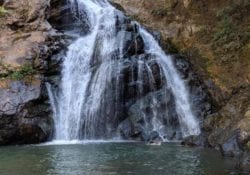
Does My Costa Rica have a travel blog?
Why yes, it does! Check out our blog for information on everything from sustainable travel to Costa Rica’s most haunted building to teaching English in Costa Rica! You can also read about how to contribute to our travel blog!
Read our Privacy Policy - Sitemap.









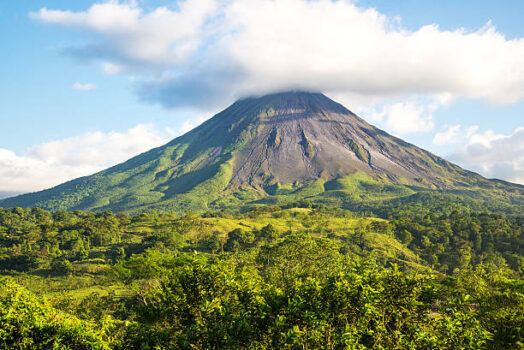
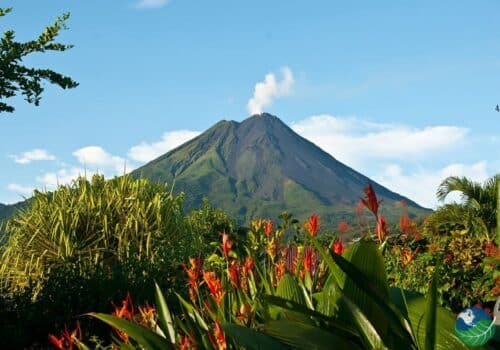
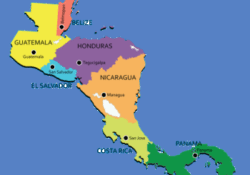 Where is Costa Rica?
Where is Costa Rica? What is the weather like when traveling to Costa Rica?
What is the weather like when traveling to Costa Rica? Is the government stable?
Is the government stable? What are regular business hours?
What are regular business hours?


 What do I do in case of emergencies?
What do I do in case of emergencies? 
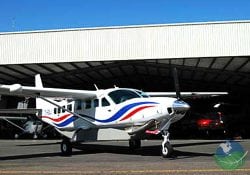 Domestic Flights – How much luggage can I bring?
Domestic Flights – How much luggage can I bring? Where are the nicest beaches?
Where are the nicest beaches?

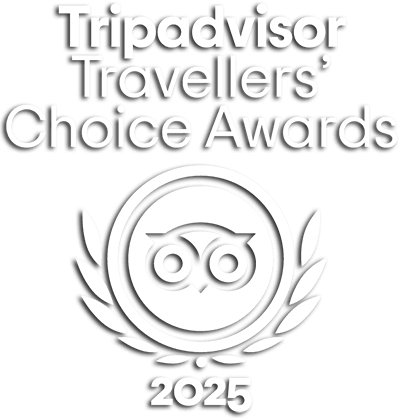

Follow Us